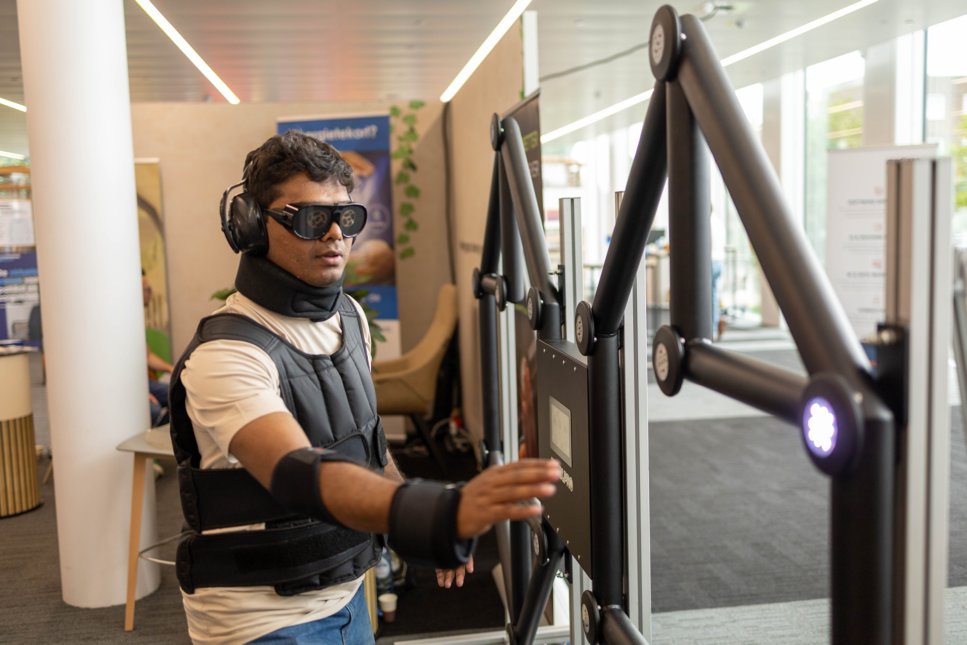Smart Architecture: User‐centred and data-driven design
Summary of the project
In this project, a pilot Empathic Lab has been created at Chair of Smart Architectural Technologies. The objective of the Empathic Lab is to sensitize students to user-centric design. We focus on an empathic framework to design for people according to the needs and requirements. Specifically, we have focused on older people, people with disabilities and people with dementia.
The kit created for the project consisted of suits designed to experience life with physical impairments, a VR set, and an online user manual for students that deals with the technical side of using the VR set.
In an initial exploration phase of the design process, where the students focus in understanding the needs, capabilities, and preferences of older people, the students were able to wear suits created to make the user feel empathy for older people or people with physical impairments. In the translation and elaboration phases of the design, the students used virtual reality software to visualize their designs. In the validation phase, the students test their design on older people by inviting them to participate in a virtual reality tour of the designed spaces.

Aim of the project
The primary aim of this project has been to teach students and practitioners to integrate data-driven monitoring technologies into user-centric architectural designs. The project has been addressing the mismatch between residents' expectations and designers' intentions by incorporating actual user data into the design process. It has also been preparing students for the increasing demand for data-driven, user-centric approaches in the building industry.
The specific goals of this project are:
- Develop an (open) experience tool to collect user experiences.
- Create an online platform to collect data from the experience tool.
- Develop a teaching (switched classroom) module on using mixed data in user-centric design processes.
- Create tutorials on installing sensors, meeting ethical and privacy requirements, and handling data.
- Make a kit of sensors and experience tools available for student projects.
Results and learnings
The pilot Empathic Lab was used by students in their architectural projects during the Masterproject Building Technology and the Stimulating Healthy Environments graduation studio. In both types of projects, the students had to design healthy environments for older people with or without people with cognitive and/or physical impairments. The main outcome of this pilot is that it supported students in the research and design of these living environments for two reasons. Firstly, by using the suit themselves, and by communicating and observing older people during the research and design sessions, the students were able to understand and feel more empathy for older people and people with impairments. Secondly, the lab allowed students to follow the empathic methodology to carry out user-centric design in a systematic way, and observe their effects on the participants of their studies. By focusing on user-centric design and targeting one of the most important built environment challenges in the near future (i.e. aging population), this pilot allowed us to prepare the students to contribute to this societal challenge.
This pilot also allowed us to understand more the role of emergent technologies in education settings from an organisational point of view. The pilot showed us the main constraints related to organising and maintaining such a lab, for the point of view of its longevity. This outcomes will be considered for future activities in the Faculty of the Built Environment in the development of future education labs.

